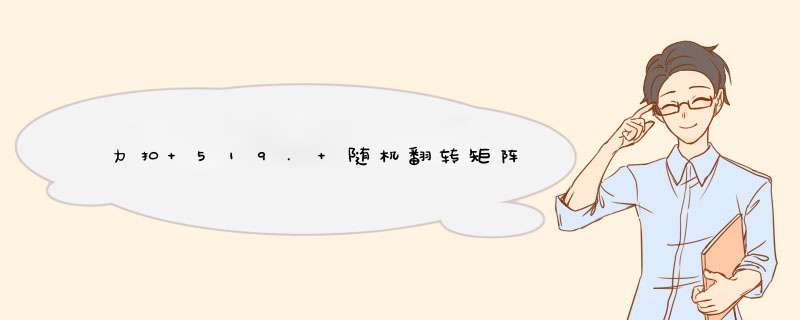
给你一个 m x n 的二元矩阵 matrix ,且所有值被初始化为 0 。请你设计一个算法,随机选取一个满足 matrix[i][j] == 0 的下标 (i, j) ,并将它的值变为 1 。所有满足 matrix[i][j] == 0 的下标 (i, j) 被选取的概率应当均等。
尽量最少调用内置的随机函数,并且优化时间和空间复杂度。
实现 Solution 类:
Solution(int m, int n) 使用二元矩阵的大小 m 和 n 初始化该对象
int[] flip() 返回一个满足 matrix[i][j] == 0 的随机下标 [i, j] ,并将其对应格子中的值变为 1
void reset() 将矩阵中所有的值重置为 0
输入
[“Solution”, “flip”, “flip”, “flip”, “reset”, “flip”]
[[3, 1], [], [], [], [], []]
输出
[null, [1, 0], [2, 0], [0, 0], null, [2, 0]]
解释
Solution solution = new Solution(3, 1);
solution.flip(); // 返回 [1, 0],此时返回 [0,0]、[1,0] 和 [2,0] 的概率应当相同
solution.flip(); // 返回 [2, 0],因为 [1,0] 已经返回过了,此时返回 [2,0] 和 [0,0] 的概率应当相同
solution.flip(); // 返回 [0, 0],根据前面已经返回过的下标,此时只能返回 [0,0]
solution.reset(); // 所有值都重置为 0 ,并可以再次选择下标返回
solution.flip(); // 返回 [2, 0],此时返回 [0,0]、[1,0] 和 [2,0] 的概率应当相同
来源:力扣(LeetCode)
链接:https://leetcode-cn.com/problems/random-flip-matrix
著作权归领扣网络所有。商业转载请联系官方授权,非商业转载请注明出处。
1、将二维问题转化为一维问题
利用二维的坐标能够唯一对应出编号(idx = row * n + col),可以将问题转换为一维问题。
class Solution {
int row, col, cnt; //cnt:矩阵元素中的个数
Map map = new HashMap<>();
Random random = new Random(300);
public Solution(int m, int n) {
row = m;
col = n;
cnt = m * n;
}
public int[] flip() {
int x = random.nextInt(cnt--);
int idx = map.getOrDefault(x, x);
map.put(x, map.getOrDefault(cnt, cnt));
return new int[]{idx / col, idx % col};
}
public void reset() {
cnt = row * col;
map.clear();
}
}
欢迎分享,转载请注明来源:内存溢出

 微信扫一扫
微信扫一扫
 支付宝扫一扫
支付宝扫一扫
评论列表(0条)